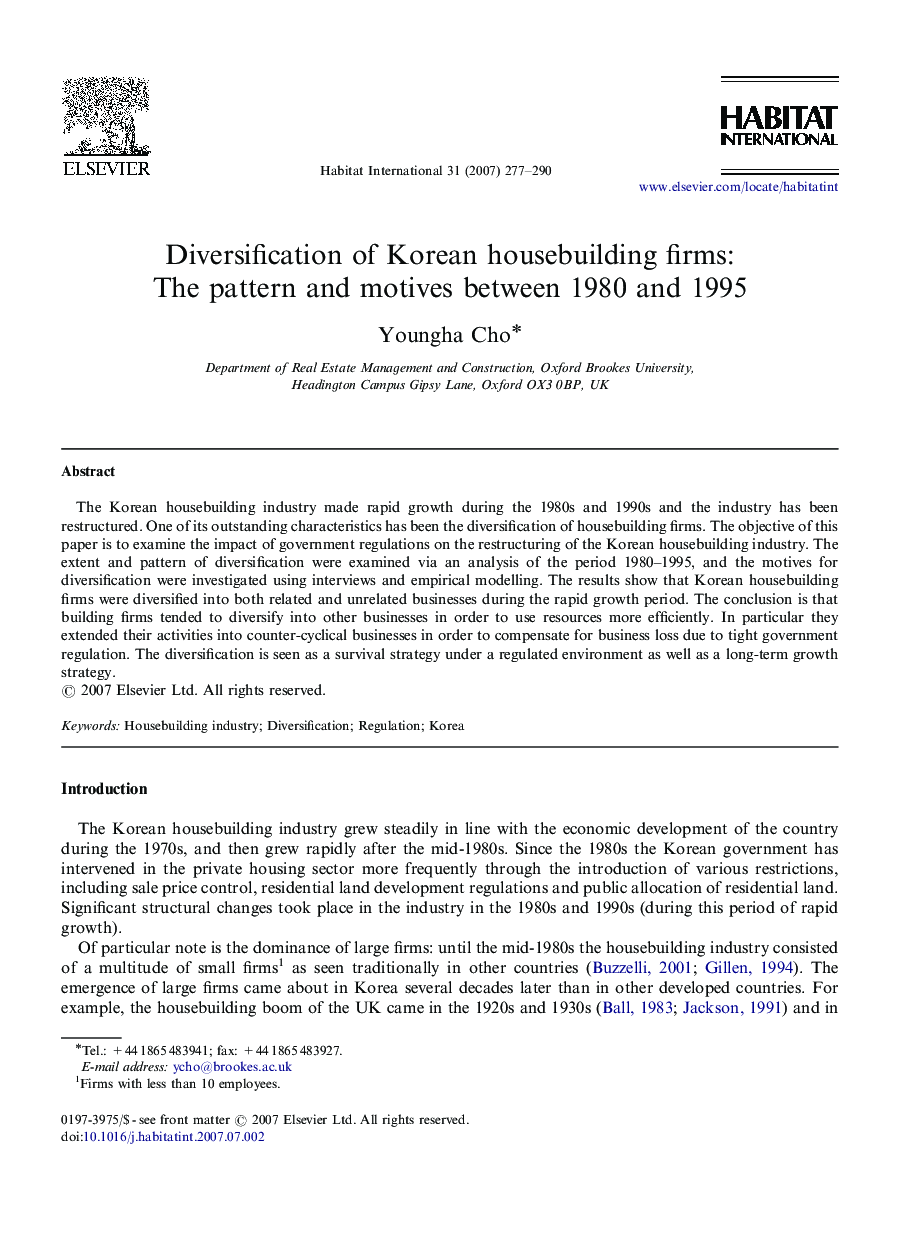| Article ID | Journal | Published Year | Pages | File Type |
|---|---|---|---|---|
| 1048445 | Habitat International | 2007 | 14 Pages |
The Korean housebuilding industry made rapid growth during the 1980s and 1990s and the industry has been restructured. One of its outstanding characteristics has been the diversification of housebuilding firms. The objective of this paper is to examine the impact of government regulations on the restructuring of the Korean housebuilding industry. The extent and pattern of diversification were examined via an analysis of the period 1980–1995, and the motives for diversification were investigated using interviews and empirical modelling. The results show that Korean housebuilding firms were diversified into both related and unrelated businesses during the rapid growth period. The conclusion is that building firms tended to diversify into other businesses in order to use resources more efficiently. In particular they extended their activities into counter-cyclical businesses in order to compensate for business loss due to tight government regulation. The diversification is seen as a survival strategy under a regulated environment as well as a long-term growth strategy.
